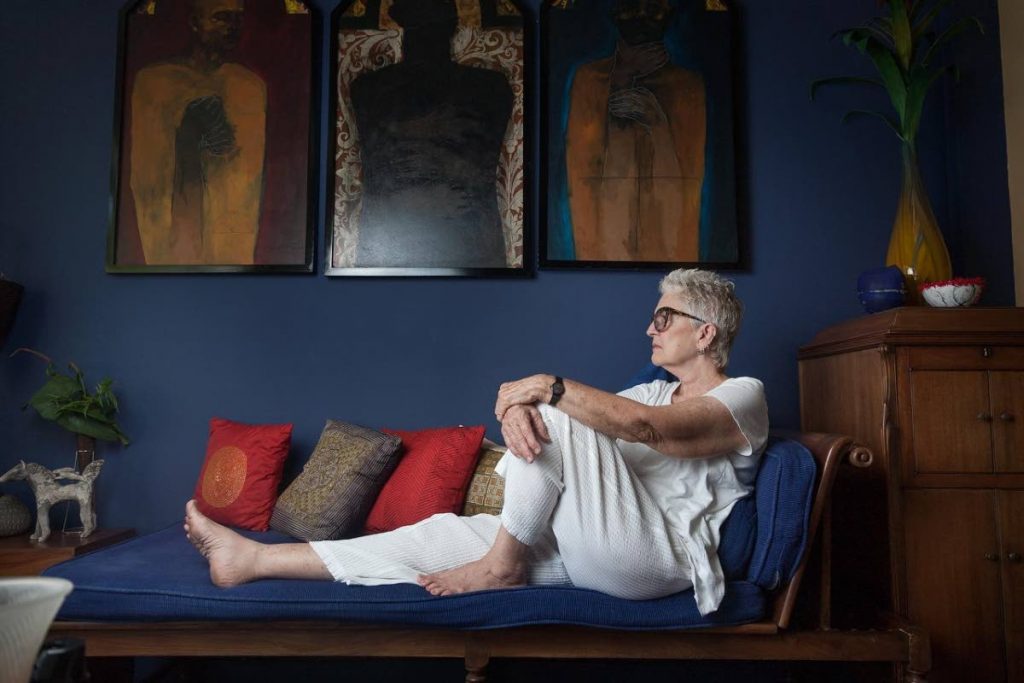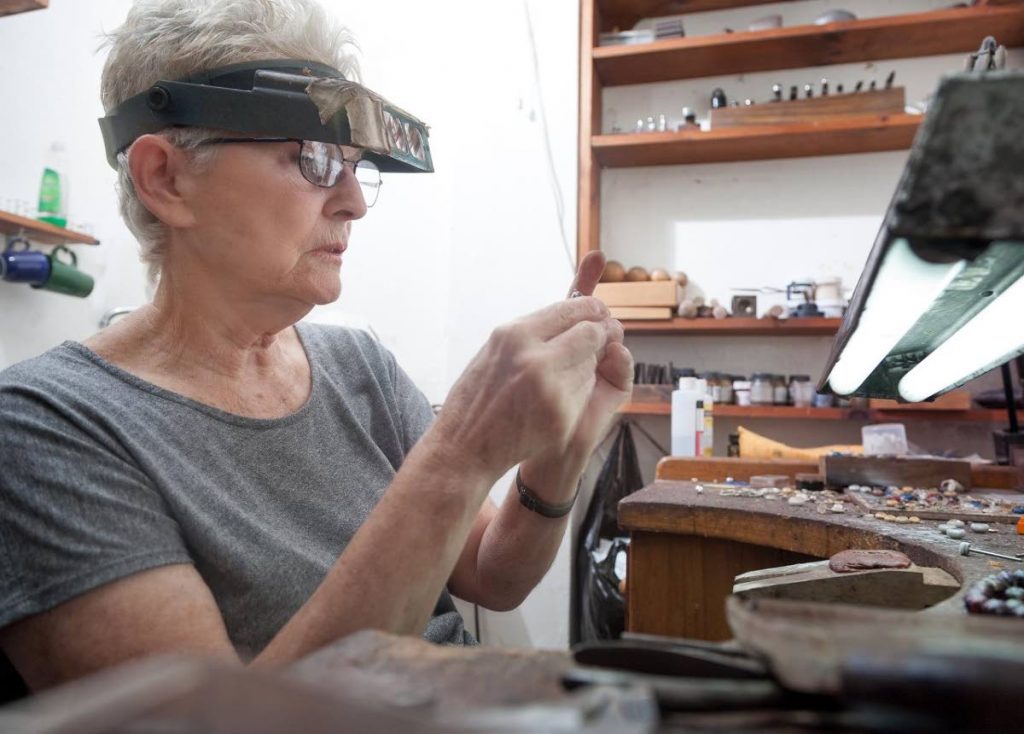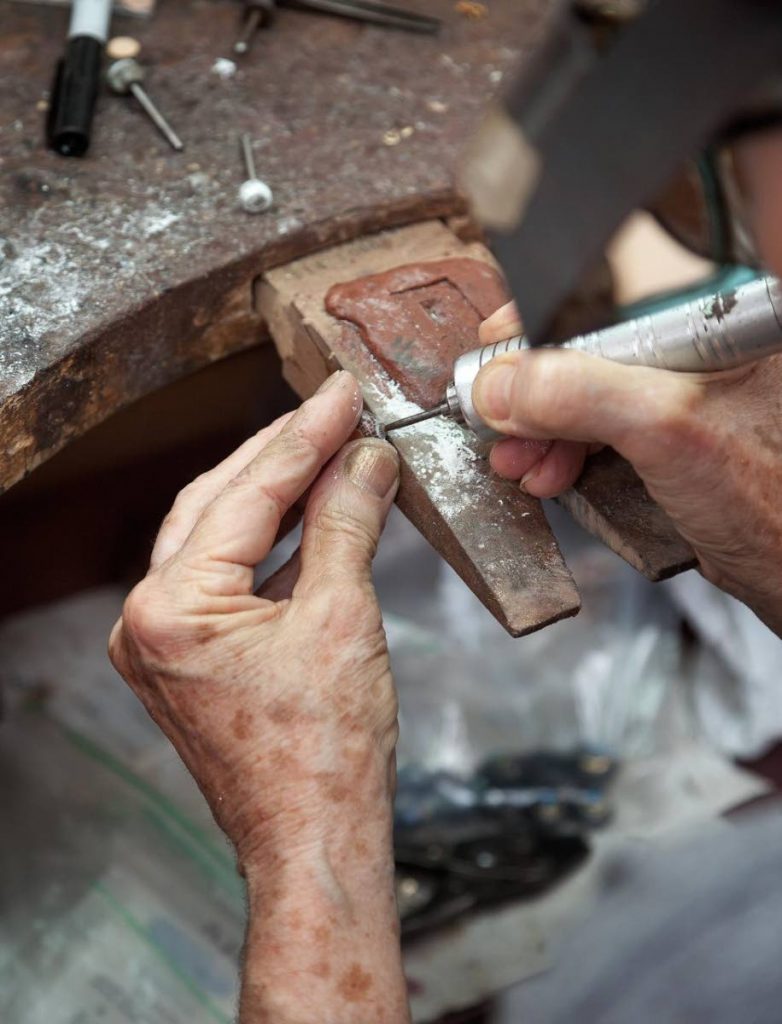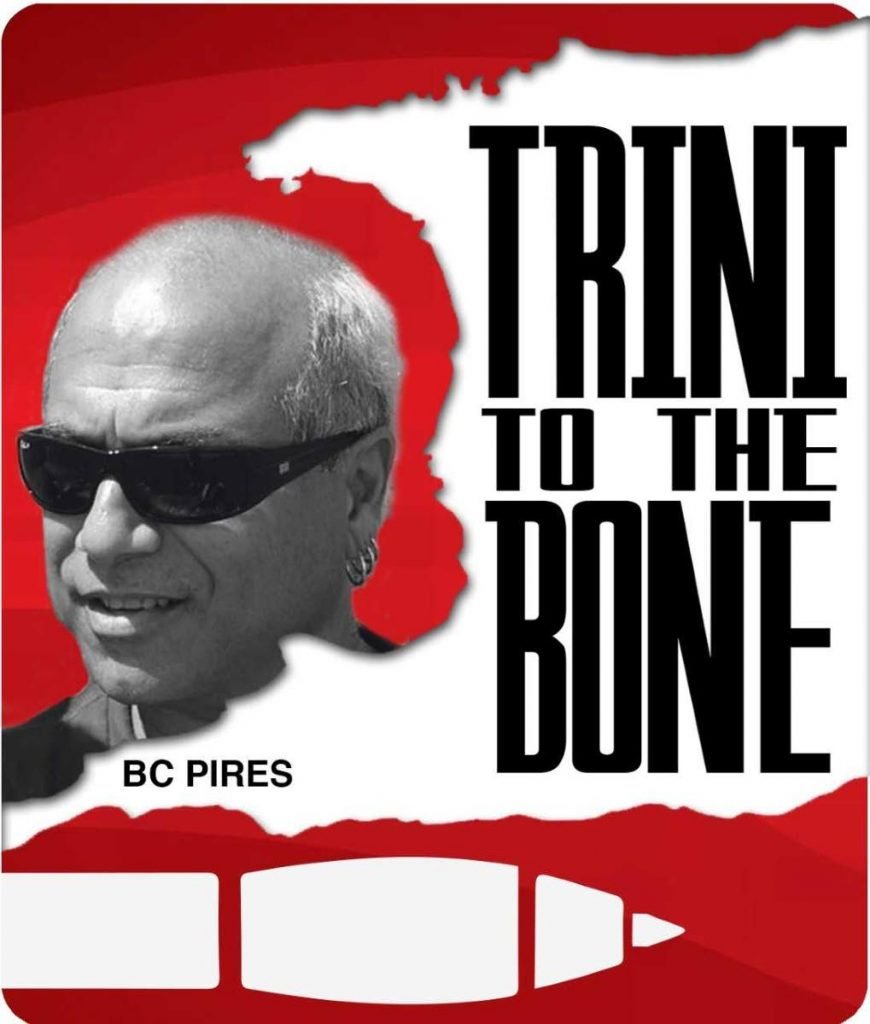The gentle warrior spirit of Trinidad

AS TOLD TO BC PIRES
My name is Barbara Jardine and my ebony bracelet “The Warrior” is the headline act of the Victoria & Albert Museum’s new British-Caribbean Trail.
One end of my Warrior bracelet terminates in the carved head of a woman (wearing) an armoured helmet of silver, tourmalines and iridescent green and black beetle.
The other end is a hand, cupping a spherical garnet – a drop of blood.
Made almost 50 years ago in my final year at the Royal College of Art, she was purchased by the V&A.
I come from Deep South, Guayaguayare. Until age ten, life was within the idyllic “bubbles” of the oilfield: Guaya, Coura, Moruga and Beach Camp.
Moruga Camp (comprised) six wooden houses on tall iron stilts surrounded by dense forest.
At midday it would suddenly darken. I remember rain roaring on the galvanise roof as, at age three, I sat in my nanny, Theda Francis’s ample lap, being fed tiny, intensely flavoured pieces of olive oil-soaked salt cod, tomato and hops from a blue-and-white enamel plate, spirals of scented orange peel drying overhead.
I have an older and a younger sister. We are very different, but extremely precious to one another.
We all had sons, four boys within five years, and they, too, are close.
“Family” is where one feels safest and loved most.
Our father, born in 1910 on a Caura cocoa estate, served in the Royal Navy in WWII. His working life was gruelling, weeklong, alternate night and day shifts on oil rigs.
A stern, tall, beautiful man, he married late, aged 38. Home-schooled and shy, he made his daughters’ education his life’s priority.
He died at 63, completely out of the blue.

The day before, at Piarco, heading back to London, I’d slipped into the departure lounge without saying goodbye, to save him the awkward farewell emotions. I wish I’d got to know him better. Our mother died at 71 after a long illness.
At ten, I joined my elder sister at a “good” British all-girls boarding school, a far cry from the fun-filled, foolish Famous Five fiction I’d read.
Clanging bells and paired “crocodiles.” Twice-weekly baths in shared, tepid, scummy water. Foul and alien food – rice pudding instead of rice and stew chicken.
My first winter in England was the coldest for 60 years. I’d never been cold before.
We came home once a year for the summer holidays on an interminable BOAC flight via Newfoundland, Greenland, Bermuda, and Barbados.
As a borderline flower child, I danced with naked, stoned hippies at the first Glastonbury festival.
I’ve whirled like a Dervish (not as easy as it looks), meditated (or tried to) with my mantra, struggled with Sufism and grappled with Gurdjieff.
But I am still not much the wiser. I can barely fathom pi r squared, let alone the meaning of God.
Rare, brief moments of awareness, though, make me fairly certain there is more to life than tangible realities.
At 17, with a secretarial course under my belt – “Something you can always fall back on, dear” – a handful of O-Levels and a sense of fairness, independence, courage under fire, I started a year’s foundation course at Guildford Art School.
A few months in (because of militant student protests), the main college closed. I sketched and painted by day, and, three evenings a week, attended a metalwork class with five older ladies, my first taste of what would become my life’s work.
“Swinging London” was the place to be in the 70s. We were young, beautiful, optimistic and our lives overflowed with possibility and excitement.
I lived in a rundown terraced mansion house off the legendary Portobello Road in the very “happening” Notting Hill Gate, in a draughty third-floor apartment and its hungry, coin-eating water heater.
The annual Carnival was evolving on my doorstep and Caribbean people and food filled the markets in Ladbroke Grove. Island Recording Studios was just up the road. All youth mourned when Jimi Hendrix, already a legend at 27, died of an overdose in his London flat.
I saved enough to return to Trinidad after a long – six-year – absence.
In the last days of my holiday, I rekindled a brief holiday romance with a boy I’d met when I was 15.
One week after I returned to London, I was back for my father’s funeral. And in the arms of a delighted lover.
My fate was sealed. The lustre of London was dead.
I graduated with prizes and accolades, but couldn’t care less.
In a week, I was on a flight home to a very different life.
My most important pieces have always been narrative and autobiographical, the intense emotions at the time being essential to their making – though not necessarily consciously. Only sometimes years later, they reveal to me their stories.
The Warrior, along with The Pearl of Wisdom – recently purchased by our own National Museum – are two such pieces.

Both were made in that final year at the RCA, at a time of self-doubt and questions, but also a time of laser-like focus and technicolour emotions.
All colours are glorious in the right context.
The thought of a yellow jacket makes me nauseous. But a yellow poui takes my breath away.
I am excited by the Warrior’s renewed exposure through the V&A’s new British-Caribbean Trail that connects us, the Caribbean people, and their British colonists, through precious artefacts.
I have stood beside her case in the V&A’s grand jewellery gallery. When people quietly gazed at her, I wanted to say, “I made her. Look at me.”
But it is enough that she is, and that her message of graceful courage and dignity continues.
I’m a bit of an old rocker at heart. The Rolling Stones’ Satisfaction was the first record (45rpm) I ever bought, at age 15.
I used to love to boogie, and may still break away, not often, when by myself. I think an old lady “moving to the music: looks ridiculous.
I hardly ever listen to music intentionally any more. I can’t when I work. It affects my focus.
Trinis, to me, are disproportionately creative, beautiful and bright. We could have been and done anything.
Many of our brightest and best leave, taking their gifts with them and never coming back, making their mark far from home.
Trinis are like the grasshopper in Aesop’s fable, living for the moment while taking it for granted. Without respect or gratitude for our bounteous gifts and with no thought for future generations.
The emotions I feel for the land of my birth are as varied and confused as it is. Trinidad and Tobago are two very different places, as are the people.
I am definitely more at home in Trinidad.
I love it, but it is an infuriating paradox.
This two-island country has been more blessed than anywhere else on earth (with) our diversity, natural wealth, climate, environment, history.
But we have not nurtured it, nor do we realise how fragile it is. Our diversity makes us one of the most culturally intriguing nations on the planet, and yet we hold on to our “tribes” and divisions instead of embracing (one another).
Read the full version of this feature on Saturday at www.BCPires.com



Comments
"The gentle warrior spirit of Trinidad"